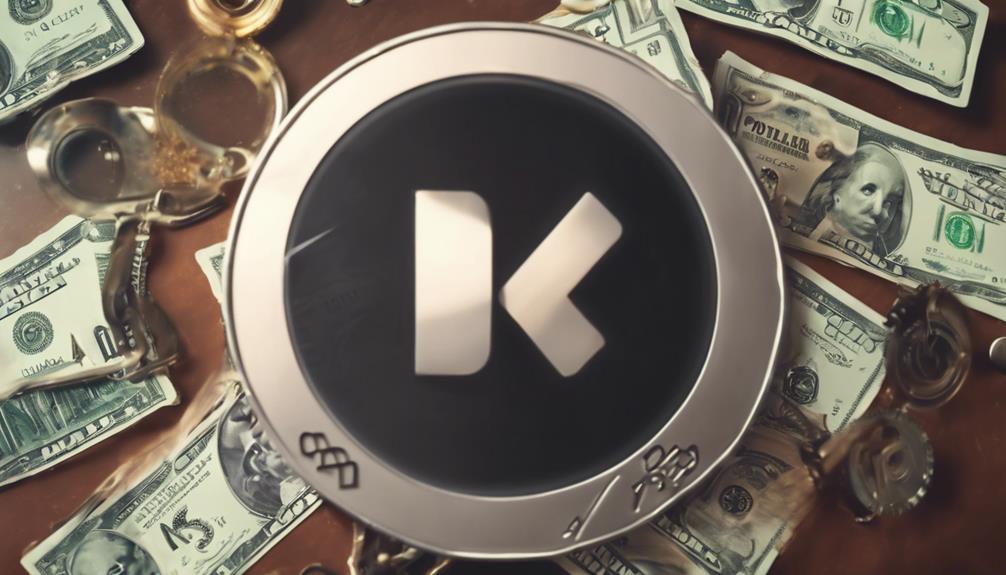
How much do YouTubers make per view?
Did you know that, on average, YouTubers earn between $0.01 and $0.03 for an ad view, translating to $3 – $5 per 1000 views?
Of course, this figure can vary greatly, depending on factors like the viewer’s location and the video’s engagement rate.
You might be curious about how this system works in detail, or perhaps you’re wondering about the success stories of the highest earners.
Either way, there’s a fascinating world behind the scenes of YouTube’s monetization process, and we’re about to get a closer look at it.
Key Takeaways
- YouTubers typically earn between $0.01 to $0.03 per ad view, translating to about $3 – $5 per 1000 views.
- The revenue split between YouTube and creators is 55% for the creator and 45% for YouTube.
- Ad revenue varies based on viewer location, video engagement, and the type of content.
- High engagement videos attract high-paying advertisers, thereby increasing ad revenue.
Understanding YouTube’s Partner Program

Diving into YouTube’s Partner Program helps you understand how YouTubers generate income, as it’s the platform’s primary monetization method. It’s the innovative engine that powers the financial success of millions of content creators worldwide. But not everyone can jump on this bandwagon; there’s a criteria to meet – this is what we call ‘partner eligibility’.
To be eligible, you’ll need to amass 4,000 watch hours in the previous 12 months and have at least 1,000 subscribers. This isn’t merely a numbers game, though. YouTube also requires compliance with its policies and guidelines, along with living in a country where the program is available.
Now, let’s talk about the exciting part: revenue sharing. Once you’re part of the Partner Program, YouTube shares advertising revenue. It’s a 55-45 split, favoring you. That’s right, you pocket 55% of the ad revenue generated by your videos, while YouTube takes a 45% cut.
It’s important to remember, though, that this isn’t a ‘get-rich-quick’ scheme. It requires patience, creativity, and persistence. But with the right approach and understanding of the system, you can turn your YouTube channel into a lucrative business.
How Ad Revenue Works
Let’s get to the bottom of how ad revenue works on YouTube.
First, you need to grasp how YouTube’s ad system functions, as it’s the backbone of your potential earnings.
Then, we’ll analyze the factors that influence your ad revenue and look at strategies to maximize your revenue potential.
Understanding YouTube’s Ad System
To grasp how much YouTubers earn per view, it’s vital to first understand the intricacies of YouTube’s ad system and how ad revenue works. The ad system evolution and YouTube’s monetization policies are particularly key.
- Ad Types: YouTube hosts various ad types, including display, overlay, skippable, non-skippable, and bumper ads.
- Monetization Eligibility: YouTube’s monetization policies require channels to have at least 1,000 subscribers and 4,000 watch hours in the past 12 months to qualify for ad revenue.
- Revenue Split: YouTube typically keeps 45% of the ad revenue, while the content creator takes 55%.
- Ad Rates: These vary based on factors like video content, viewer demographics, and ad quality.
Innovation in understanding this system can boost your potential earnings as a YouTuber.
Factors Influencing Ad Revenue
Building on the foundation of understanding YouTube’s ad system is essential to consider the factors that influence ad revenue. These factors directly impact how much YouTubers make per view. One crucial element affecting revenues is ad blocking impact. Users with ad-blocking software deny YouTubers the chance to monetize their views, reducing their earnings. However, revenue diversification can mitigate this effect. YouTubers can leverage alternative income streams, such as merchandise sales or Patreon contributions, to supplement their ad earnings.
It’s also essential to consider factors such as video length, viewer demographics, and content type. These variables can influence how much advertisers are willing to pay for ad placements, ultimately affecting a YouTuber’s per-view earnings.
Maximizing Ad Revenue Potential
Understanding how to maximize ad revenue potential on YouTube requires a strategic approach. You need to ensure your content isn’t only engaging but also appealing to the right demographics to attract high-paying advertisers.
To boost your ad revenue, consider these key concepts:
- Ad placement strategies: Strategically place ads where they’ll have the most impact, like mid-roll for longer videos.
- Revenue diversification: Don’t rely solely on ad revenue. Consider merchandise sales, sponsored content, or Patreon contributions.
- Viewer Retention: Your viewers should watch your content for longer. The more watch-time, the more ads they see.
- Targeted content: Create content that attracts viewers with high ad spending power.
Innovative thinking paired with data-driven strategies can significantly enhance your YouTube ad revenue.
The Influence of Video Length
Surprisingly, the length of your video plays a significant role in how much you can earn as a YouTuber. It’s not merely about producing long videos; it’s more about balancing video editing and content quality to create engaging content that holds viewers’ attention.
YouTube’s algorithm favors videos that keep people on the platform longer. Therefore, longer YouTube videos, if well-crafted, have the potential to generate more ad impressions, leading to increased revenue. But remember, longer doesn’t always mean better. If you’re extending your video’s length without improving its content, viewers might abandon it halfway, which could negatively affect your metrics.
Proper video editing plays a crucial role here. It’s essential to cut out irrelevant parts and keep the content crisp and engaging. Quality over quantity is a golden rule. Viewers are more likely to watch a shorter video of high quality than a long, boring one.
Therefore, focus on creating meaningful content that provides value to your audience. Experiment with different video lengths to find the sweet spot that keeps your audience engaged, maximizes ad impressions, and optimizes your earnings.
Role of Viewer Engagement

While refining your video length strategy, don’t overlook the crucial role viewer engagement plays in boosting your YouTube earnings. Engagement analytics provide you with a wealth of data-driven insights into your viewers’ behaviors. By analyzing this data, you can optimize your content strategy to enhance viewer engagement, thus increasing your income.
Here are four key factors to consider:
- Comments: The more comments your videos receive, the greater the level of engagement. Respond to your viewers’ comments to foster a sense of community and encourage a continuous dialogue.
- Likes and Dislikes: These provide a rapid assessment of your content’s appeal. If you notice a surge of dislikes, it’s time to reassess your content strategy.
- Shares: When viewers share your videos, it indicates high engagement. More shares lead to more views, potential subscribers, and increased earnings.
- Viewer demographics: Understanding who your viewers are can help tailor your content to their preferences and needs. Use this data to create content that resonates with your audience.
Sponsorships and Affiliate Marketing
In addition to ad revenue, leveraging sponsorships and affiliate marketing can significantly boost your earnings on YouTube. Engaging in brand partnerships and influencer campaigns are two such strategies that can help grow your income. Let’s delve deeper into these aspects.
Brand partnerships involve collaborating with companies to promote their products or services. Data shows that YouTubers can earn between $10,000 to $50,000 per sponsorship if they’ve a substantial following. This is a lucrative avenue, especially if the brand aligns with your content and audience.
Affiliate marketing, on the other hand, is when you promote a product and earn a commission on any sales made through your referral link. It’s a win-win situation, as you can generate passive income while providing value to your audience with product recommendations.
Influencer campaigns are another potential goldmine. As an influencer, you’re paid to create content around a brand’s product or service. The earning potential here is massive, with top influencers making thousands per post.
To conclude, YouTube isn’t just about ad revenue. It’s about leveraging your influence to create profitable partnerships. With strategy and persistence, sponsorships and affiliate marketing can drastically increase your earnings.
Top Earning YouTubers Revealed

Now, let’s delve into the world of top-earning YouTubers and understand the financial success they’ve achieved through their content creation. The figures might surprise you, but remember, it’s not just about posting a video; it’s about effective content strategies and earning diversification.
- Ryan’s World: This 9-year-old made $29.5 million in 2020. His content strategies? Unboxing, educational videos, and his infectious enthusiasm.
- Mr. Beast (Jimmy Donaldson): With earnings of $24 million, his philanthropy-based challenges have won him millions of views.
- Dude Perfect: Five friends racking up $23 million. Their secret? Stunt-based sports videos and an energetic vibe.
- Rhett and Link: They’ve made $20 million. Their winning formula? A popular talk show format and engaging comedic content.
Each of these YouTubers has mastered the art of diversifying their earnings, not just relying on views or ads but also on merchandise sales, brand deals, and other income streams. They’ve shown that innovation is key in the world of YouTube, where content strategies and earning diversification can make all the difference. You too can aim for such heights, but remember, it takes creativity, patience, and strategic planning.

